

Gujarat, located in the western part of India, is one of the most vibrant and culturally rich states in the country. It is known for its heritage, industries, wildlife, and festivals. The state shares its borders with Rajasthan, Madhya Pradesh, Maharashtra, and the Arabian Sea, and also has an international border with Pakistan. The capital city of Gujarat is Gandhinagar, while Ahmedabad is its largest city and commercial hub. Gujarat is also famous for the Statue of Unity, the world's tallest statue, dedicated to Sardar Vallabhbhai Patel.
The pride of Gujarat lies in its deep historical roots, cultural traditions, and remarkable achievements, making it one of the most dynamic states of India. From ancient times, Gujarat has been a center of trade, spirituality, and bravery, shaping its unique identity across centuries.
Gujarat's legacy begins with the Indus Valley Civilization, where Lothal emerged as one of the world's earliest trade hubs with a sophisticated dockyard. Over time, great dynasties such as the Solankis and Mauryas enriched the region with architecture, learning, and temples like the Sun Temple at Modhera. In the modern era, Gujarat gave India two of its greatest leaders: Mahatma Gandhi, who led the freedom struggle with truth and nonviolence, and Sardar Vallabhbhai Patel, who united the nation after independence.
The cultural pride of Gujarat shines through its festivals, art, and dance forms. The state is world-famous for Garba and Dandiya Raas, performed during Navratri, symbolizing joy and devotion. Traditional crafts like Bandhani (tie-dye), Patola silk, embroidery, and woodwork carry centuries of artistic excellence. Gujarati cuisine, from Dhokla and Thepla to Undhiyu and Fafda, has won hearts far beyond its borders.
Nature adds to Gujarat's pride with the Asiatic Lions in Gir National Park, the white desert of Kutch, and beautiful coastal stretches. Its temples, including Somnath, Dwarkadhish, and Akshardham, make Gujarat a center of faith and spirituality for millions of devotees.
In today's era, Gujarat is known as the "Growth Engine of India" due to its industries, ports, and infrastructure. The Statue of Unity, the tallest statue in the world, stands as a proud tribute to Sardar Vallabhbhai Patel, attracting global attention. The state is also a leader in renewable energy, diamond trade, and petrochemicals, showcasing its vision for progress.
Thus, the pride of Gujarat comes from its glorious past, rich culture, natural wonders, and modern growth. It is a land where heritage meets progress, and where the spirit of unity, bravery, and creativity continues to inspire India and the world.
Gujarat is not only famous for its history, culture, and festivals but also for its rich linguistic heritage. The state is home to several languages that reflect its diversity, traditions, and social harmony. The most important and widely spoken language is Gujarati, but many other languages and dialects also contribute to the cultural identity of the region.
Gujarati is the official language of the state and is spoken by the majority of its people. It belongs to the Indo-Aryan branch of the Indo-European language family. Gujarati has several dialects, such as Kathiawadi, Surti, Charotari, and Kutchi, which vary across different regions. The language has a rich literary tradition, with great poets and writers like Narsinh Mehta, whose devotional songs are still sung today, and modern writers such as Umashankar Joshi and Jhaverchand Meghani, who enriched Gujarati literature with poems, stories, and novels.
Languages are deeply connected to Gujarat's folk culture. Songs of Garba and Dandiya Raas are traditionally sung in Gujarati. Proverbs, storytelling, and local theatre like Bhavai also use Gujarati dialects, keeping traditions alive. Meanwhile, the use of Hindi and English shows how Gujarat is open to modern education and global connections, balancing tradition and progress.
The languages of Gujarat are not just a means of communication but also a reflection of its heritage, literature, and culture. Gujarati remains the heart and pride of the state, but the presence of Hindi, English, Kutchi, Sindhi, and other languages shows its diversity and inclusiveness. This unique linguistic harmony makes Gujarat a shining example of how tradition and modernity can exist side by side.
Gujarat, the land of colors and traditions, is famous for its vibrant festivals that reflect the state's culture, unity, and joy of life. The festivals of Gujarat are not just celebrations but also a way of preserving traditions, strengthening community bonds, and showcasing cultural pride.
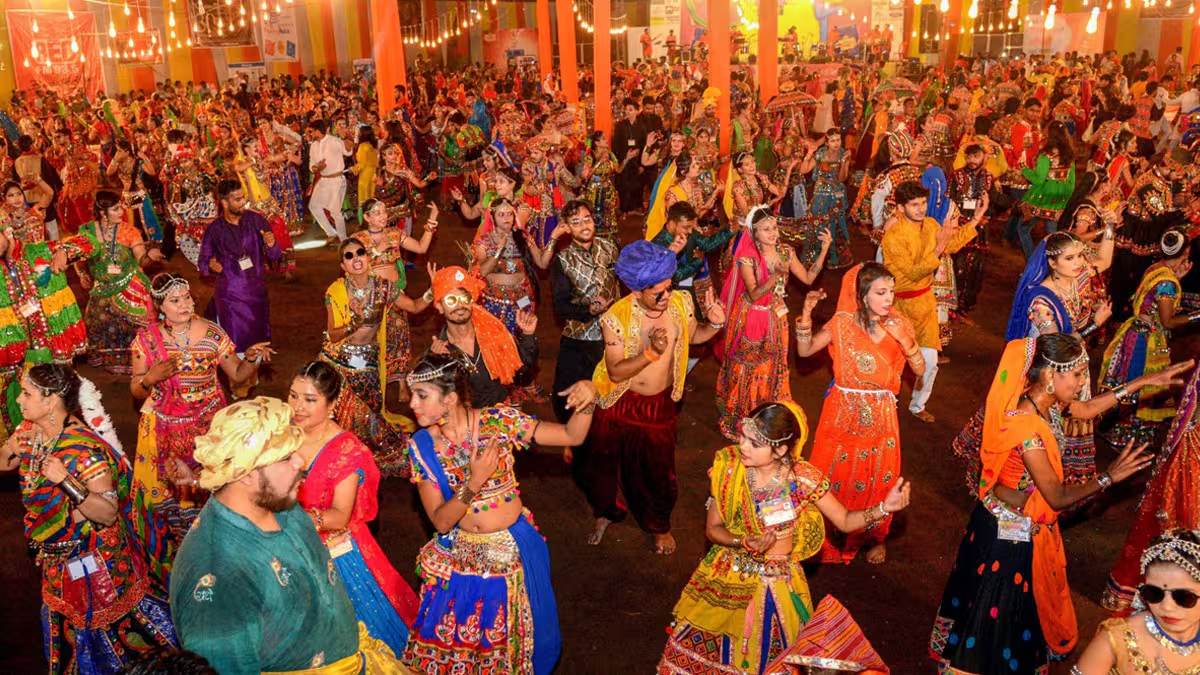
Navratri is the most famous festival of Gujarat, celebrated for nine nights in honor of Goddess Durga. People perform Garba and Dandiya Raas in colorful traditional attire, making it one of the world's largest dance festivals. The energy, music, and devotion during Navratri truly symbolize the spirit of Gujarat.
Uttarayan, celebrated on 14th January, marks the harvest season and the change of the sun's direction. The skies of Gujarat fill with colorful kites, and people enjoy traditional sweets like undhiyu and jalebi. It is not just a festival but also a symbol of hope and new beginnings.
Rann Utsav is one of the most spectacular cultural festivals of Gujarat, celebrated every year in the Great Rann of Kutch, a vast white salt desert. It usually takes place from November to February, when the weather is pleasant and the desert turns into a lively carnival.
Rann Utsav is more than just a festival – it is a celebration of the desert, culture, and colors of Gujarat. From the glowing white sands under the moonlight to the vibrant folk dances and crafts, Rann Utsav reflects the true essence of Gujarat's heritage and hospitality.
As Dwarka is believed to be the kingdom of Lord Krishna, Janmashtami is celebrated with great devotion. Temples are decorated, and devotees perform songs, dances, and plays narrating Krishna's life.
The festivals of Gujarat represent its joyful spirit, cultural richness, and unity. From dancing during Navratri, flying kites on Uttarayan, to experiencing the magical Rann Utsav, these celebrations show why Gujarat is one of India's most colorful and lively states.

Gujarat, one of India's most prosperous states, is home to several cities that are not only culturally significant but also play a vital role in its economic and historical identity. Each city has its own unique charm, traditions, and importance.
Ahmedabad is the largest city in Gujarat and one of the most important urban centers of India. Located on the banks of the Sabarmati River, it is famous for its history, culture, industries, and educational institutions.
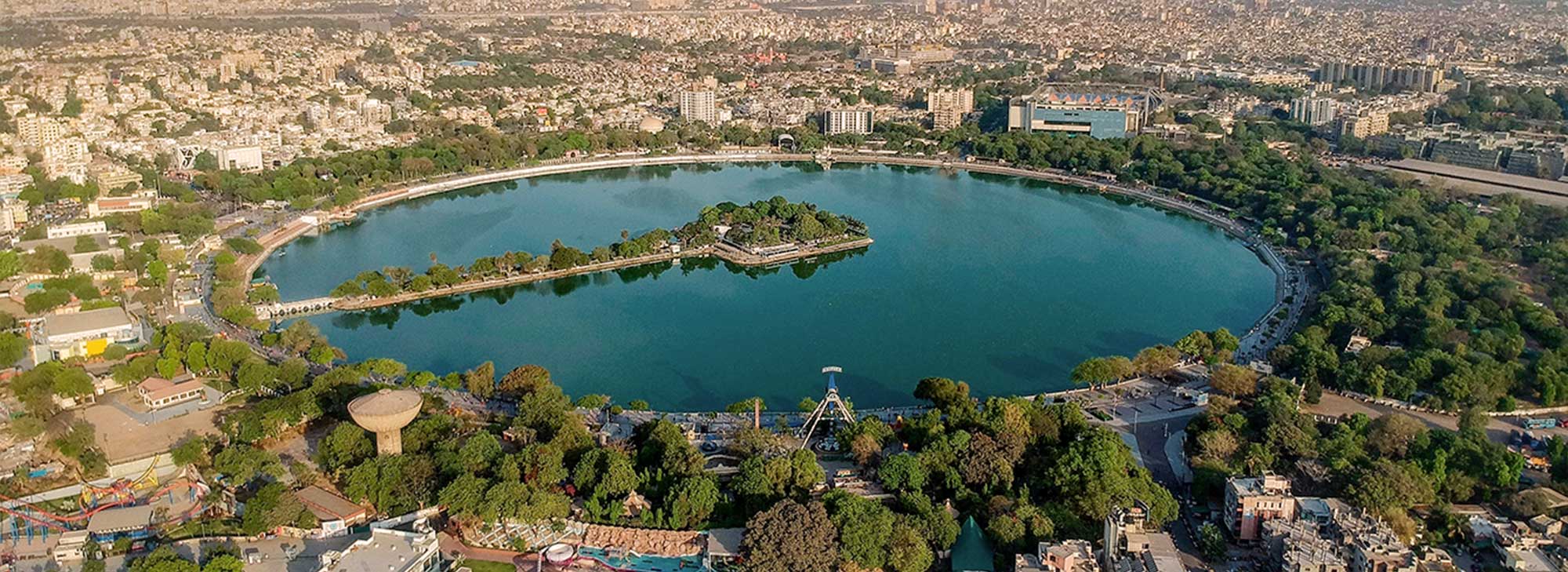
Adalaj Stepwell, also known as Adalaj ni Vav, is one of the finest examples of India's architectural brilliance and cultural heritage. Located in the village of Adalaj, about 18 kilometers from Ahmedabad in Gujarat, this stepwell was built in 1498 by Queen Rudabai, the wife of Vaghela chief Veer Singh. The structure is more than just a water reservoir—it is a perfect blend of utility, beauty, and spirituality.
The stepwell is five stories deep and was designed to serve as a reliable source of water in the arid region of Gujarat. Its architectural style uniquely combines Hindu and Islamic elements, making it a rare and striking monument. The walls and pillars are adorned with intricate carvings depicting mythological scenes, flowers, geometric patterns, and symbols of daily life. Even today, these carvings reflect the extraordinary craftsmanship of artisans from that era.
Beyond its practical use as a reservoir, Adalaj Stepwell served as a social and cultural hub. Villagers gathered here not only to collect water but also to rest, pray, and escape the scorching summer heat. The design of the stepwell allows cool air to circulate inside, maintaining a pleasant temperature even when the outside climate is harsh. For travelers and pilgrims, it was a serene resting place on long journeys.
The story behind its construction adds to its charm. According to legend, after the death of her husband, Queen Rudabai undertook the building of this stepwell as a memorial. Her devotion and sacrifice are remembered through this monument, which continues to inspire visitors.
Today, Adalaj Stepwell stands as a symbol of Gujarat's rich history and artistic excellence. It attracts tourists, historians, and architecture lovers from across the world, making it one of the state's most celebrated heritage sites.
The Sidi Saiyyed Mosque, located in Ahmedabad, Gujarat, is one of the city's most celebrated monuments. Built in 1573 during the last years of the Gujarat Sultanate, it was commissioned by Sidi Saiyyed, a slave of Sultan Shams-ud-din Muzaffar Shah III.
The mosque is world-famous for its stone lattice windows, known as "jalis", which are considered masterpieces of Indo-Islamic architecture. Among these, the most iconic is the "Tree of Life" jali, a delicately carved stone screen depicting intertwined branches and foliage, symbolizing growth, unity, and eternity. These jalis allow light and air to filter into the mosque, creating a play of patterns and shadows that enhance its spiritual atmosphere.
Although modest in size compared to other grand mosques, the Sidi Saiyyed Mosque stands out because of its architectural precision, intricate artistry, and historical significance. The beautifully carved arches, domes, and jalis reflect the exceptional craftsmanship of 16th-century artisans.
Today, the mosque is not just a place of worship but also a symbol of Ahmedabad's heritage. The "Tree of Life" design has become an emblem of the city and is even used in the logo of the Indian Institute of Management, Ahmedabad (IIM-A).
Science City and Heritage Walks in Ahmedabad are among the city's most engaging attractions, drawing both students and tourists.
Science City is a vast educational and entertainment complex designed to promote scientific curiosity in a fun and interactive way. It features attractions like the IMAX 3D theatre, Energy Park, Life Science Park, Planet Earth Pavilion, Hall of Science, musical fountain, and robotics exhibits. Students love its hands-on learning approach, while tourists enjoy exploring technology, space, environment, and innovation under one roof.
On the other hand, Heritage Walks of Ahmedabad, organized through the old city, take visitors on a journey through narrow lanes, traditional pols (housing clusters), carved wooden havelis, historic temples, mosques, and community spaces. The walk highlights Ahmedabad's rich cultural fabric, centuries-old architecture, and the harmonious blend of Hindu, Jain, and Islamic influences. It allows participants to experience the UNESCO World Heritage City tag that Ahmedabad proudly holds.
Together, Science City and Heritage Walks offer two contrasting yet complementary experiences—one showcasing modern science and technology, the other highlighting living history and traditions. Both are immensely popular with school groups, researchers, history enthusiasts, and travelers seeking to understand Ahmedabad's unique ,identity.
Gandhinagar, the capital of Gujarat, is one of India's most well-planned and greenest cities. Located on the banks of the Sabarmati River, it was established in 1960, when Gujarat was formed as a separate state. The city is named after Mahatma Gandhi, the Father of the Nation.
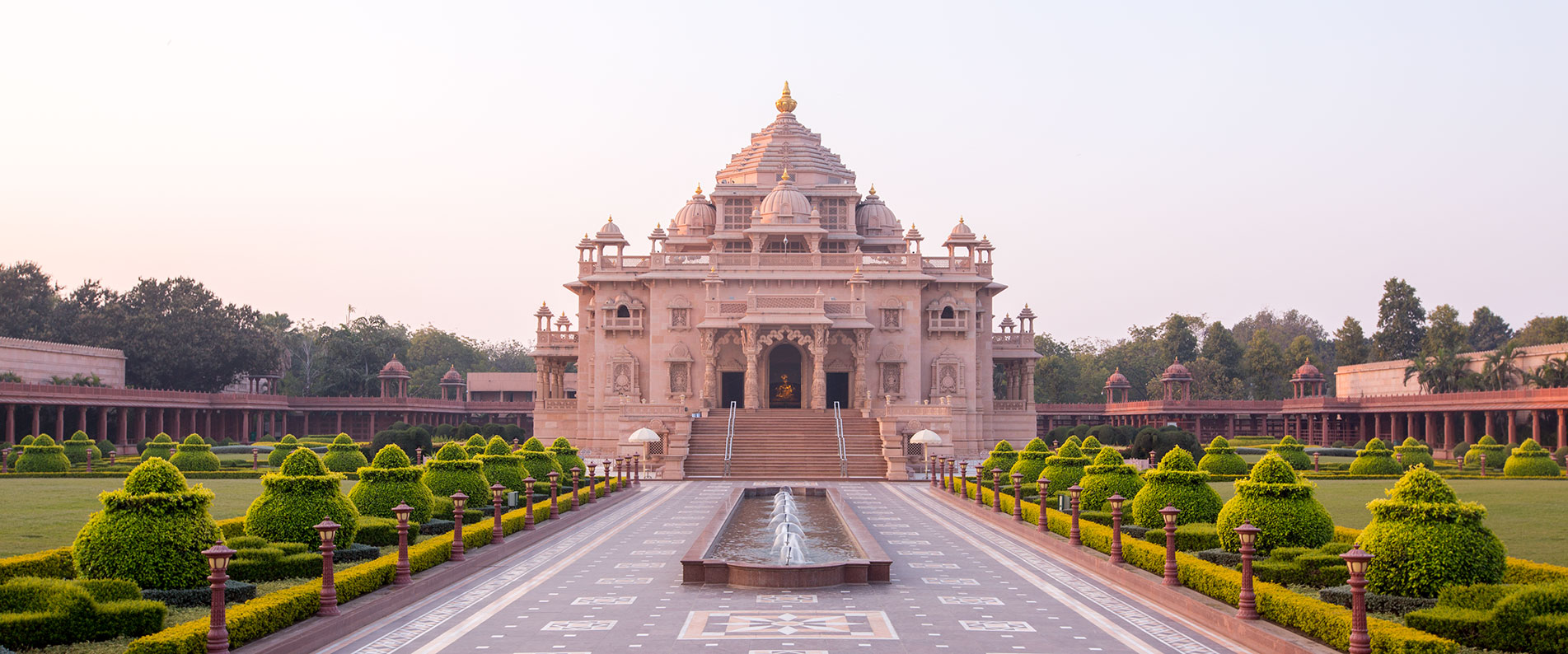
Akshardham Temple, located in Gandhinagar, Gujarat, is one of the most magnificent temples in India, dedicated to Lord Swaminarayan. Built in 1992 by the Bochasanwasi Akshar Purushottam Swaminarayan Sanstha (BAPS), it is not only a place of worship but also a cultural and spiritual center.
The temple is renowned for its grand architecture, made of pink sandstone, without the use of steel. The main shrine houses the idol of Lord Swaminarayan, surrounded by beautifully carved pillars, domes, and sculptures depicting deities, saints, and motifs from Indian culture.
Apart from the main sanctum, the temple complex includes exhibition halls, audio-visual shows, and dioramas that narrate the life and teachings of Swaminarayan, along with stories from Indian history and culture. The Sahajanand Van (a cultural garden) offers a blend of spirituality and entertainment, featuring a children's park, lake, and boat ride that highlights India's heritage.
One of the temple's main attractions is the Sat-Chit-Anand Water Show, which beautifully combines light, sound, water, and laser technology to depict ancient Indian wisdom and values. The Akshardham Center for Applied Research in Social Harmony (AARSH) within the complex works towards promoting peace and harmony.
Sadly, the temple was also the site of a tragic terrorist attack in 2002, but it has since been restored and continues to spread its message of peace, unity, and spirituality.
Today, Akshardham Temple stands as a symbol of devotion, culture, and architectural brilliance, attracting millions of devotees, students, and tourists from across the world.
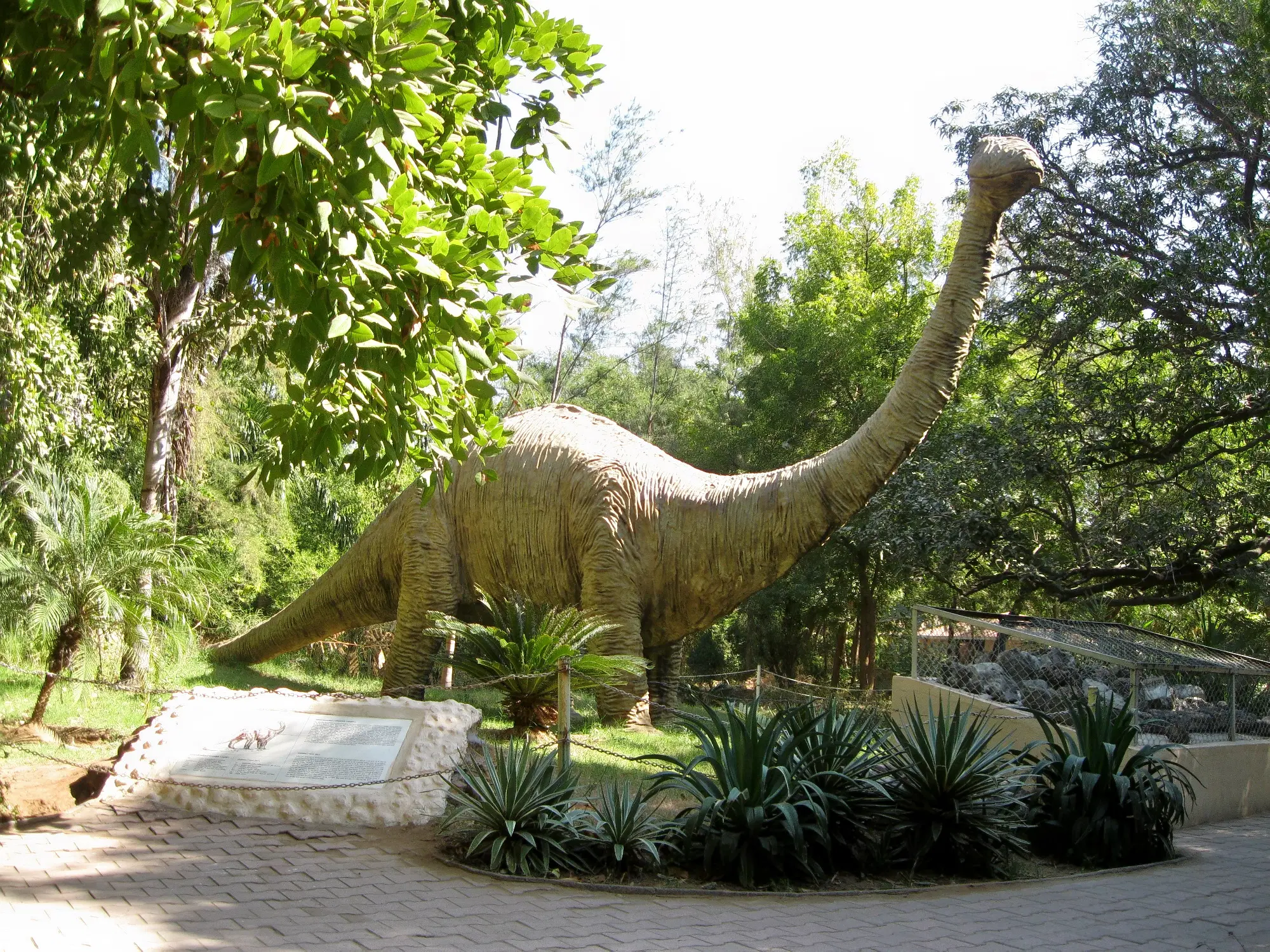

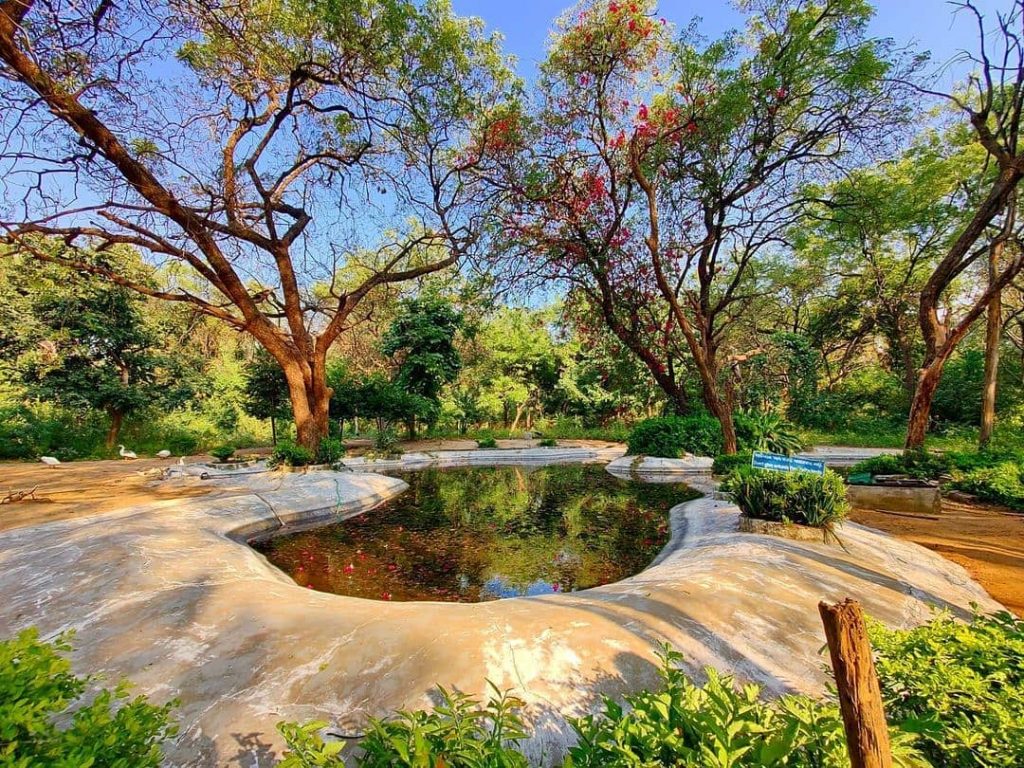
Indroda Nature Park, located in Gandhinagar, Gujarat, is one of India's most unique natural and educational destinations. Managed by the GEER Foundation, it is often called India's Jurassic Park because it houses one of the world's largest collections of dinosaur fossils and eggs. In fact, it is the second-largest hatchery of dinosaur eggs in the world.
The park covers a large area on the banks of the Sabarmati River and combines adventure, education, and conservation. It is a favorite destination for students, researchers, families, and tourists who are curious about history, wildlife, and nature.
Sarita Udyan and the Children's Park in Gandhinagar, Gujarat, are among the city's most loved green spaces, providing a refreshing escape for families, students, and tourists. Situated close to the Sabarmati River, these parks are ideal destinations for relaxation, nature walks, and recreational activities.
Sarita Udyan is a beautiful garden known for its lush greenery, colorful flower beds, and peaceful environment. It offers well-maintained walking paths, open lawns, and shaded areas, making it perfect for morning walks, picnics, and leisure time with family. The garden also has a mini-zoo with animals like deer, birds, and peacocks, which attracts children and nature lovers alike. Its serene surroundings make it a popular choice for people seeking peace away from the busy city life.
Nearby, the Children's Park is a favorite among young visitors. Equipped with play areas, toy train rides, boating facilities, and fun activities, it provides entertainment along with education. The park also features a small zoo section and beautifully landscaped gardens. Its safe and friendly atmosphere makes it one of the best spots for families to spend quality time together.
Both Sarita Udyan and Children's Park are designed to combine recreation with nature, allowing visitors to enjoy greenery, fresh air, and lighthearted activities. These places are especially lively on weekends and holidays, drawing crowds from Gandhinagar as well as nearby Ahmedabad.
In conclusion, Sarita Udyan and the Children's Park are more than just gardens—they are community spaces that promote relaxation, joy, and togetherness. Whether it's children enjoying rides, elders taking peaceful walks, or families picnicking on the lawns, these parks truly stand as popular leisure hubs for all age groups.
The Adalaj Stepwell, also known as Adalaj ni Vav, is one of the finest examples of ancient Indian architecture located near Ahmedabad, Gujarat. Built in 1498 by Queen Rudabai, wife of the Vaghela chief Veer Singh, this stepwell is not only a water reservoir but also a masterpiece of art, history, and cultural heritage.
The stepwell is five stories deep and was designed to collect and preserve water in the semi-arid region of Gujarat. It provided a reliable water source to villagers and travelers, especially during dry seasons. More than just a utility, the stepwell served as a social gathering place, where people could rest, pray, and find relief from the scorching summer heat. The unique construction allows cool air to flow inside, making the underground levels significantly cooler than the outside temperature.
What makes Adalaj Stepwell truly remarkable is its intricate carvings and architectural style. The walls and pillars are adorned with detailed sculptures of flowers, animals, deities, and mythological scenes, reflecting the artistic excellence of the era. The structure beautifully blends Hindu symbolism with Islamic design patterns, creating a rare fusion of cultural styles. This combination makes it one of the most unique and admired monuments in Gujarat.
Legend adds emotional depth to its beauty. It is said that Queen Rudabai commissioned the stepwell in memory of her husband after his death, symbolizing both love and devotion. Even centuries later, the monument stands strong, reminding us of the engineering brilliance and artistic vision of medieval India.
Today, Adalaj Stepwell is not just a tourist attraction but also a symbol of Gujarat's heritage. Visitors from across the world come here to admire its architecture, learn about its history, and experience the cool, peaceful environment it offers. Truly, it is a fine example of ancient architecture that continues to inspire generations.
Gandhinagar is a city that reflects peace, planning, and progress. With its organized sectors, educational hubs, and spiritual landmarks like Akshardham Temple, it truly stands as a modern capital rooted in tradition.
Surat, located on the banks of the Tapi River, is one of the most dynamic and prosperous cities in Gujarat. Known as the "Diamond City of the World" and the "Textile Hub of India", Surat plays a key role in Gujarat's economy and cultural life.
Surat is a city that combines rich history, strong trade, and modern growth. From being a major port in the past to becoming the world's diamond capital, Surat truly reflects the entrepreneurial spirit and prosperity of Gujarat.
Vadodara, also known as Baroda, is one of Gujarat's most beautiful and culturally vibrant cities. Situated on the banks of the Vishwamitri River, it is famous for its palaces, art, and educational institutions. The city is often called the "Cultural Capital of Gujarat."
Vadodara is truly the cultural heart of Gujarat, blending royal history, art, and education with modern progress. With its grand palaces, rich traditions, and vibrant festivals, Vadodara reflects the soul and pride of Gujarat's heritage.
Rajkot, located in the Saurashtra region of Gujarat, is one of the state's fastest-growing cities. Known for its historical importance, industries, and cultural traditions, Rajkot beautifully blends heritage with modern development.
Rajkot is a city that reflects heritage, culture, and industrial progress. From Gandhi's legacy to its growing industries and colorful traditions, Rajkot stands as one of the most important and dynamic cities of Gujarat.
The cities of Gujarat reflect a blend of tradition and modernity. From Ahmedabad's historic charm, Surat's diamond sparkle, to Vadodara's cultural richness and Gandhinagar's planned beauty, each city adds to the pride of Gujarat. These cities together make Gujarat a state of prosperity, culture, and global recognition.
Gujarat is not only famous for its heritage, food, and festivals but also for its unique fashion and textile traditions. The state is a hub of handicrafts, embroidery, and colorful attire, which reflect its vibrant culture and artistic spirit. Fashion in Gujarat is deeply connected to its folk traditions, festivals, and everyday lifestyle, making it stand out across India and the world.
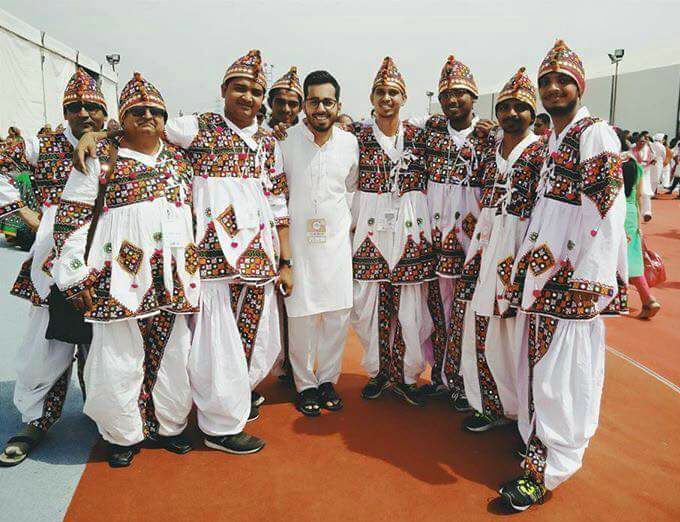
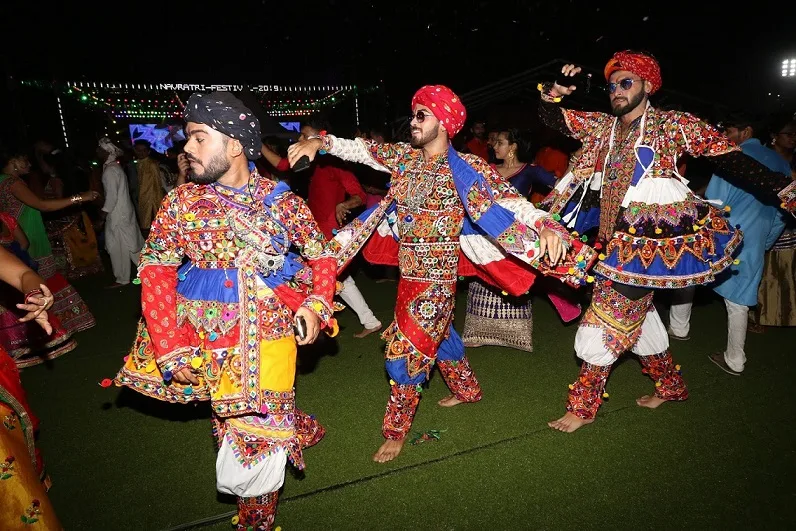
Women's traditional fashion in Gujarat is a colorful celebration of culture, art, and elegance. Each outfit reflects the state's rich heritage, unique craftsmanship, and festive spirit.
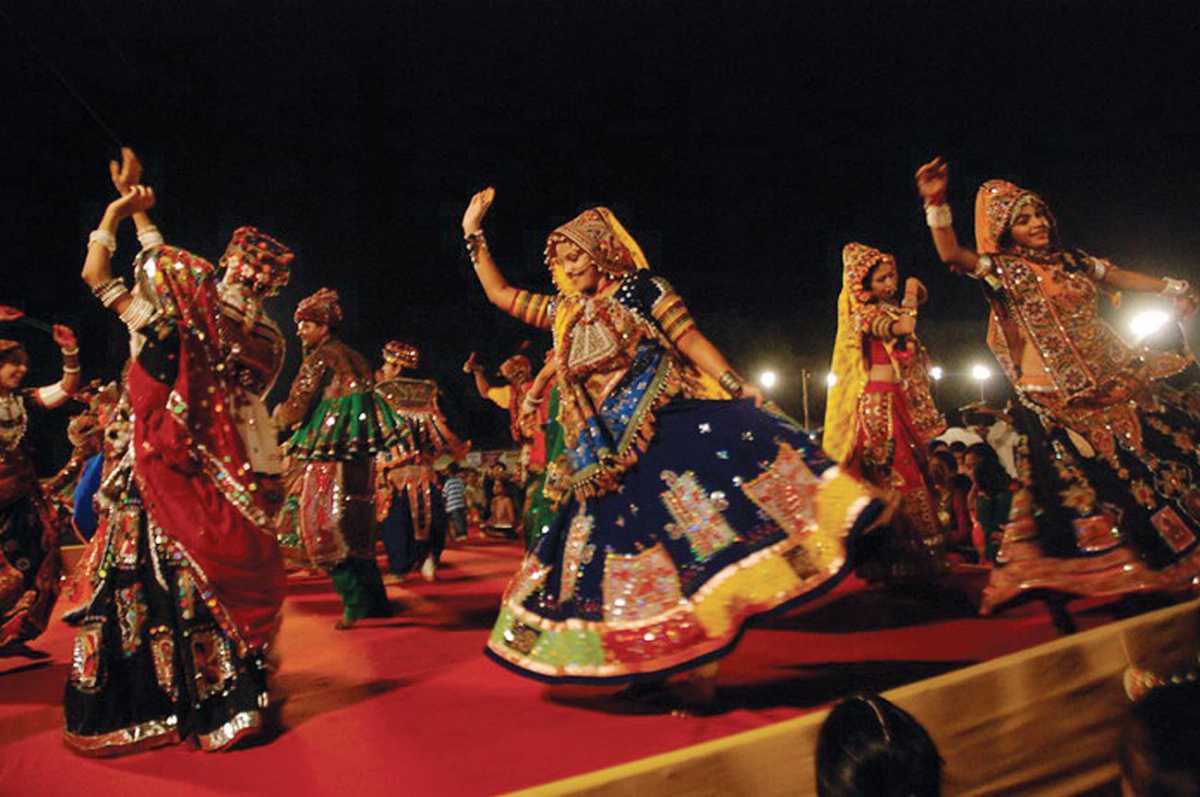
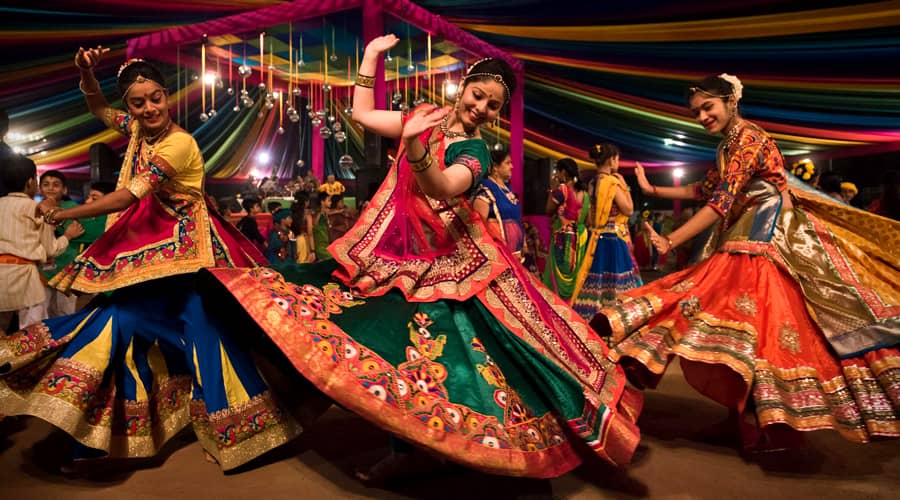
Women's traditional wear in Gujarat is not just clothing—it is an art form. From the elegance of Patola sarees to the vibrant energy of Chaniya Choli, each outfit highlights Gujarat's cultural pride, creativity, and timeless beauty.
Gujarat is world-famous for its textiles, handloom weaving, and embroidery. The state is considered a textile hub of India, and its fabrics are admired globally for their vibrant colors, artistic patterns, and rich heritage.
The fabrics and embroidery of Gujarat are a living tradition, showcasing the creativity of artisans and the cultural richness of the state. From the elegance of Patola silk to the vibrancy of Bandhani and the artistry of Kutchi embroidery, Gujarat's textiles have made a mark not only in India but across the world.
While Gujarat is celebrated for its rich traditional textiles and embroidery, modern fashion has also found a strong presence in the state. The fusion of heritage with contemporary trends has made Gujarat a hub for designers, textile industries, and fashion lovers.
Modern fashion in Gujarat is a beautiful blend of old and new. It keeps alive the traditional essence of Bandhani, Patola, and Kutchi embroidery, while adapting them into modern silhouettes and global fashion trends. This balance ensures that Gujarat remains a fashion powerhouse, influencing both Indian and international markets.